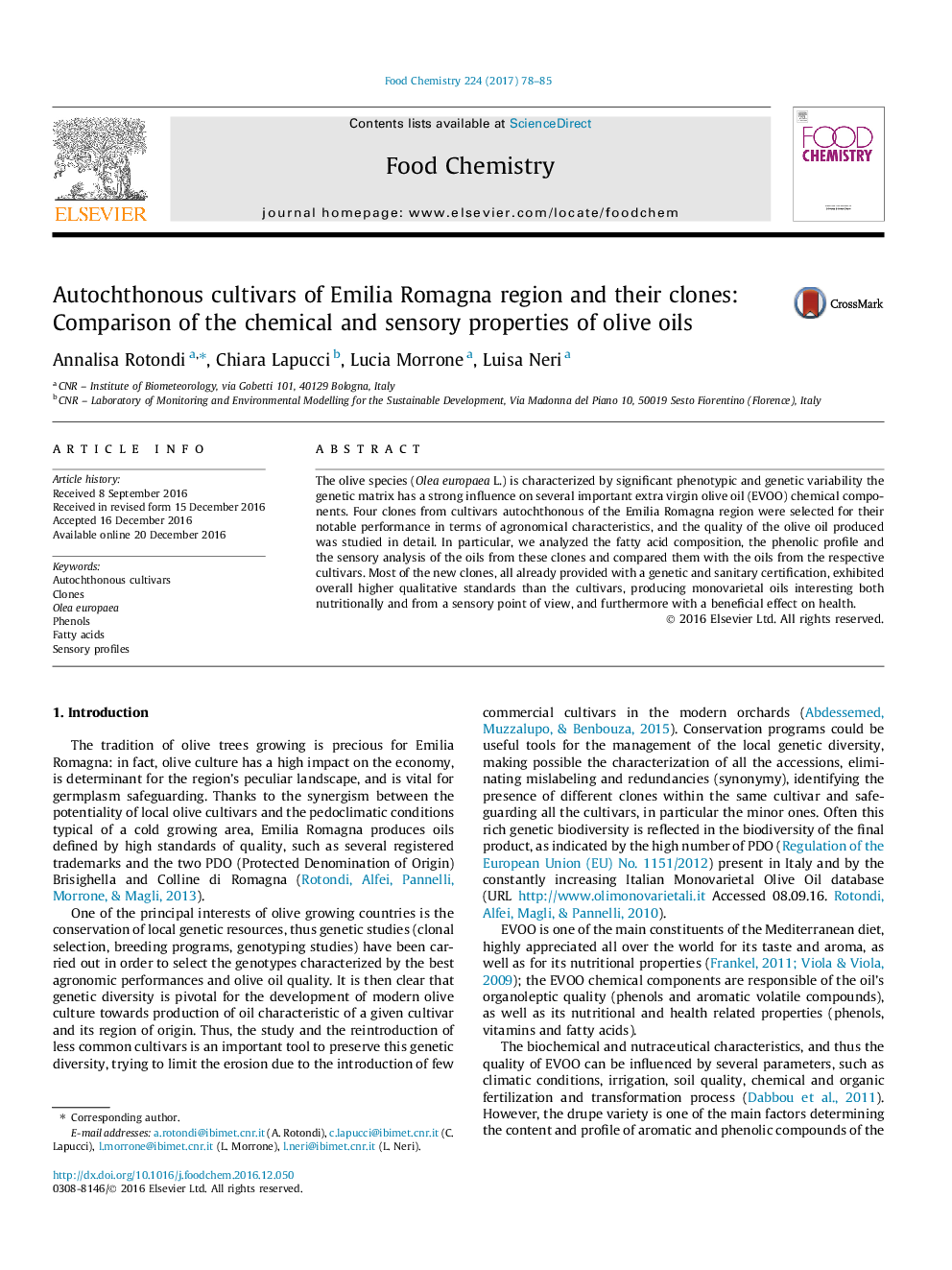| Article ID | Journal | Published Year | Pages | File Type |
|---|---|---|---|---|
| 5133546 | Food Chemistry | 2017 | 8 Pages |
â¢Four clones from Emilia Romagna's prestigious autochthonous cultivars were selected.â¢The deriving oils nutritional and sensory properties were analyzed and compared.â¢The oils from the clones were overall richer in oleic acid and total phenols.â¢The oils from the clones had a distinguished sensory profile (bitter and pungent).â¢The oils from the clones had thus a beneficial effect on health.
The olive species (Olea europaea L.) is characterized by significant phenotypic and genetic variability the genetic matrix has a strong influence on several important extra virgin olive oil (EVOO) chemical components. Four clones from cultivars autochthonous of the Emilia Romagna region were selected for their notable performance in terms of agronomical characteristics, and the quality of the olive oil produced was studied in detail. In particular, we analyzed the fatty acid composition, the phenolic profile and the sensory analysis of the oils from these clones and compared them with the oils from the respective cultivars. Most of the new clones, all already provided with a genetic and sanitary certification, exhibited overall higher qualitative standards than the cultivars, producing monovarietal oils interesting both nutritionally and from a sensory point of view, and furthermore with a beneficial effect on health.
